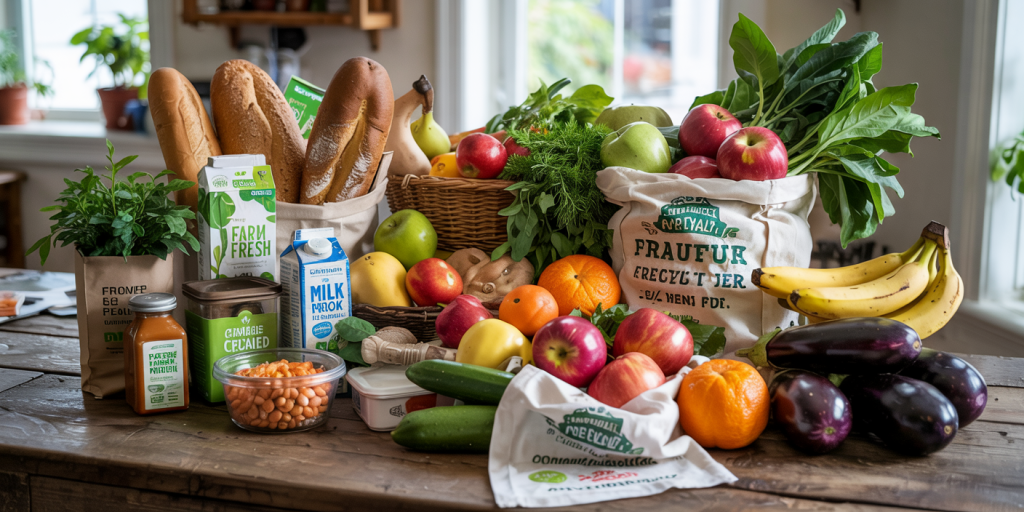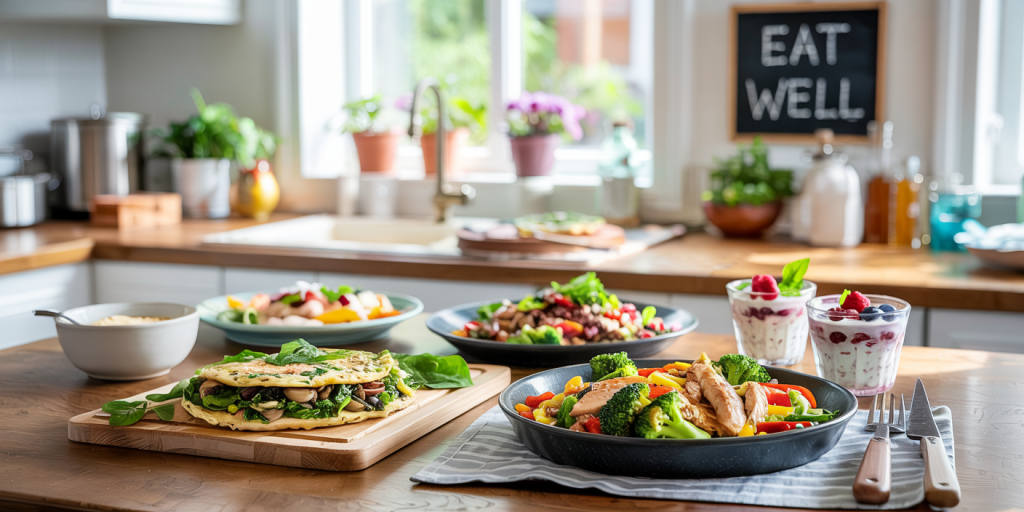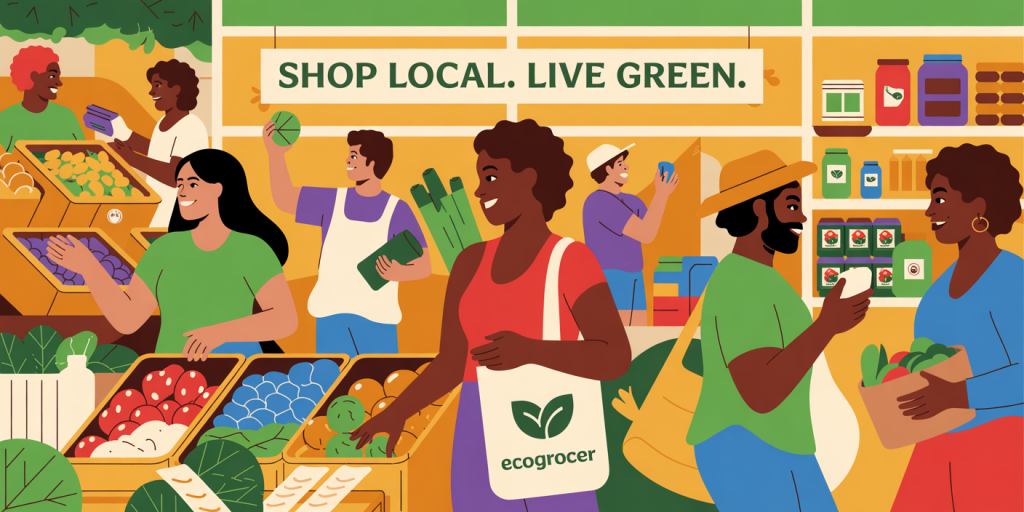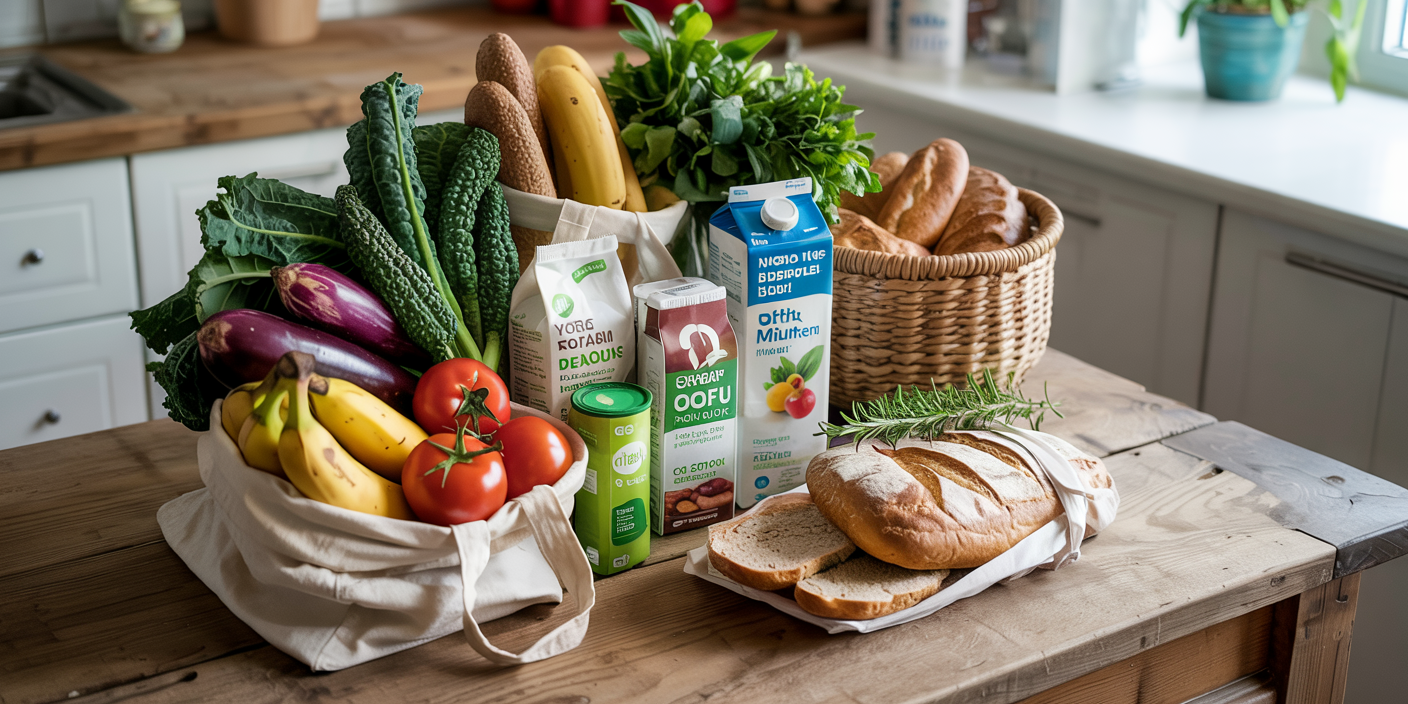Grocery shopping is a fundamental routine that influences daily nutrition, budgeting, and lifestyle. A well-planned weekly grocery haul not only ensures wholesome meals but also reduces food waste and saves money. This article delves into effective strategies for organizing your weekly grocery haul, coupled with practical, easy-to-prepare recipes that cater to a variety of dietary needs and preferences. Backed by recent studies, real-world examples, and comparative data, this guide aims to revolutionize your grocery shopping and meal preparation habits.

Planning Your Weekly Grocery Haul: The Foundation of Smart Shopping
Strategic planning is the cornerstone of an efficient weekly grocery haul. According to a 2023 survey by the Food Marketing Institute, 60% of shoppers who prepared a detailed shopping list spent 25% less on groceries and reduced waste by 30%. The key steps involve assessing your current pantry inventory, setting a realistic budget, and selecting nutrient-dense foods suited to your family’s preferences and dietary requirements.
Before heading to the store, creating a meal plan for the week can guide your shopping list, eliminating impulsive purchases and ensuring ingredient availability. For example, planning dishes around versatile staples like rice, beans, and seasonal vegetables allows flexibility and maintains nutritional balance. Additionally, grouping your list by categories—produce, proteins, grains, dairy, and pantry essentials—streamlines the shopping process, reducing time and stress.
Case in point: a working mother of two in Chicago shared that switching from ad-hoc shopping to a structured weekly plan not only saved her an average of $15 per trip but also cut meal prep time by 20 minutes daily. This structure made her diet healthier by prioritizing fresh produce and whole foods.
Essential Categories in Your Weekly Grocery Haul
A balanced weekly grocery haul covers a wide spectrum of food groups, ensuring that each meal is nutritious and flavorful. Here’s an analysis of essential categories with practical examples:
Fresh Produce
Fresh fruits and vegetables should form the bulk of your grocery cart, supplying vital vitamins, minerals, and fiber. According to the CDC, consuming at least 5 servings of fruits and vegetables daily reduces risks of chronic diseases like heart conditions and type 2 diabetes.
Including leafy greens such as spinach or kale, cruciferous vegetables like broccoli, and colorful fruits like berries increases antioxidant intake. For instance, a study published in the *Journal of Nutrition* (2022) links higher berry consumption with improved cognitive health.
Protein Sources
Protein is vital for muscle repair, immune function, and overall vitality. Incorporate both animal-based (chicken, turkey, lean beef, eggs) and plant-based proteins (tofu, lentils, chickpeas) to diversify nutrient profiles. For example, lentils are a cost-effective source rich in protein and fiber—costing roughly $1.50 per pound compared to $5.00 per pound for chicken breast (USDA data, 2023).
Grains and Legumes
Whole grains such as brown rice, quinoa, and whole wheat pasta support sustained energy release and digestive health. Legumes like black beans and kidney beans add protein and fiber, enhancing satiety and blood sugar regulation. According to the American Heart Association, diets rich in whole grains can lower the risk of heart disease by 21%.
Dairy and Dairy Alternatives
Whether you choose dairy or plant-based milk alternatives, these products contribute calcium, vitamin D, and protein. For lactose-intolerant individuals, almond, oat, or soy milks are nutritious alternatives.
The table below offers a comparison of average prices and nutritional values for common protein sources and dairy alternatives:
| Item | Cost per Pound | Protein per 100g | Calories per 100g | Key Nutrients |
|---|---|---|---|---|
| Chicken Breast | $5.00 | 31g | 165 | B vitamins, iron |
| Lentils | $1.50 | 9g | 116 | Fiber, folate |
| Eggs | $3.00/dozen | 13g (per 100g) | 155 | Choline, vitamin D |
| Almond Milk | $3.50/gallon | 0.5g | 30 | Vitamin E, calcium (fortified) |
| Greek Yogurt | $4.00/pint | 10g | 59 | Probiotics, calcium |
Practical Recipes for a Week’s Worth of Meals
Incorporating the groceries from your haul into delicious meals doesn’t have to be complicated. Below are recipe ideas categorized by meal times, utilizing common grocery items to maximize nutrition and taste.
Breakfast: Veggie-Packed Spinach and Mushroom Omelette
*Ingredients*: 2 eggs, 1 cup fresh spinach, ½ cup sliced mushrooms, 1 tbsp olive oil, salt and pepper to taste.
This protein-rich omelette is easy to prepare in 10 minutes and offers a nutritious start to the day. Eggs provide essential amino acids while spinach and mushrooms contribute antioxidants and minerals.
Lunch: Quinoa and Black Bean Salad with Lime Dressing
*Ingredients*: 1 cup cooked quinoa, ½ cup black beans (cooked or canned), 1 diced tomato, ¼ cup chopped red onion, cilantro, juice of one lime, 1 tbsp olive oil, salt and pepper.
This vegan-friendly salad delivers fiber, protein, and vitamin C. Quinoa is a complete protein source, making it ideal for plant-based diets. Bulk cooking quinoa at the start of the week saves time for quick assembly of meals.
Dinner: Chicken Stir-Fry with Broccoli and Bell Peppers
*Ingredients*: 1 lb chicken breast (sliced), 2 cups broccoli florets, 1 sliced red bell pepper, 2 cloves garlic, 1 tbsp soy sauce, 1 tbsp olive oil.
Stir-fries are quick, customizable, and nutritious. This dish packs over 30 grams of protein per serving and a rich supply of vitamins A and C from the colorful vegetables. Pair with brown rice for a complete meal.
Snack: Greek Yogurt with Fresh Berries and Honey

*Ingredients*: 1 cup plain Greek yogurt, ½ cup mixed fresh berries, 1 tsp honey.
A perfect balance of protein and antioxidants makes this snack both satisfying and beneficial for gut health.
Budgeting and Timing: Optimizing Your Grocery Haul
Budget constraints often shape grocery habits. By purchasing seasonal produce and bulk items, shoppers can stretch their dollars without sacrificing quality. For instance, strawberries cost 25% less during their peak season (June-August) according to USDA reports, making them an ideal budget-friendly choice when in season.
Coupons and loyalty programs also add value. A recent Nielsen survey found that 64% of consumers regularly use store coupons and that such practices can reduce grocery bills by up to 15%.
Timing your shopping trips strategically can prevent food spoilage and reduce multiple store visits. For example, shopping immediately after a meal plan review ensures that no unnecessary or duplicate items are purchased, reducing food waste. Similarly, pre-cooking portions and freezing meals like soups or casseroles from the grocery haul extends meal lifespan and convenience.
Sustainable Choices in Your Weekly Grocery Haul
With increasing awareness about environmental impact, incorporating sustainability into your weekly haul benefits both health and planet. Buying local and organic produce reduces pesticide exposure and carbon footprint. The Environmental Working Group’s 2023 “Dirty Dozen” list highlights produce with higher pesticide residue; opting for organic versions of those items, such as strawberries and spinach, can lower ingestion of harmful chemicals.

Reducing meat consumption by substituting some meals with plant proteins like legumes reduces greenhouse gas emissions. Meat production accounts for approximately 14.5% of global emissions, according to the Food and Agriculture Organization of the United Nations.
Additionally, minimizing packaged and processed foods helps cut down plastic waste. Bulk buying staples like rice, beans, and nuts from stores that allow reusable containers supports this sustainable approach.
Looking Ahead: Future Trends in Grocery Shopping and Meal Planning
The grocery shopping landscape is evolving rapidly due to technological advances and consumer preferences. Online grocery shopping is projected to grow at a compound annual growth rate (CAGR) of 24.8% through 2027 (Grand View Research), enabling convenient access to a wider array of food choices, including specialty health items and sustainable products.
Smart shopping apps now integrate AI to recommend shopping lists based on dietary goals and past purchases, further streamlining the planning process. These tools can also track nutrient intake and suggest recipe variations optimizing health outcomes.
The rise of meal kits and subscription boxes offers an alternative to traditional hauling, blending convenience with fresh ingredients and varied culinary experiences. However, meal kits generally cost 15-30% more per serving than standard groceries, making them a luxury option for some.
Looking to the horizon, urban farming and in-home grow kits for herbs and vegetables will likely gain more traction, enabling hyper-local sourcing and enhancing food security. As consumers become more health-conscious and environmentally aware, weekly grocery hauls will reflect a greater emphasis on integrative nutrition, sustainability, and convenience.
—
By applying strategic planning, making informed food choices, and leveraging practical recipes, your weekly grocery haul becomes a powerful tool for promoting health, saving money, and minimizing environmental impact. Future tech-driven advancements promise to further personalize and optimize this essential activity, transforming how we nourish ourselves and our families.

Deixe um comentário